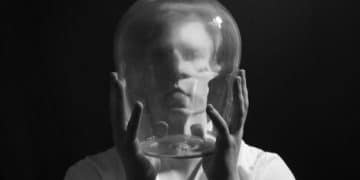Male Incontinence: Types, Causes & Management

Understanding male incontinence is crucial for effective management; it encompasses various types, each stemming from distinct causes and necessitating tailored approaches, often involving lifestyle adjustments, targeted exercises, or medical interventions to improve quality of life and sexual wellness.
Navigating the complexities of bladder control can be a significant challenge for many men, impacting daily life and confidence. This article aims to demystify the issue, offering a comprehensive look into Understanding the Different Types of Male Incontinence and How to Manage Them, providing clear, actionable insights for an improved quality of life.
Understanding the Basics: What is Male Incontinence?
Urinary incontinence in men, broadly defined, is the involuntary leakage of urine. It’s a condition far more common than often discussed, affecting millions globally, yet remains shrouded in a stigma that often prevents men from seeking the necessary help. This silence can lead to isolation and a significant reduction in quality of life, underscoring the importance of open dialogue and clear information. It’s not a normal part of aging, but rather a treatable medical condition.
Historically, incontinence was often dismissed as an inevitable consequence of getting older or a side effect of other medical conditions. However, contemporary medical understanding highlights that while prevalence may increase with age or certain conditions, it is almost always manageable or treatable. The first step towards effective management is accurate diagnosis, which hinges on understanding the varied presentations of the condition. Dispelling myths and confronting the societal discomfort around discussing bladder issues is crucial for individuals to finally get the support and treatment they need. A comprehensive approach involves not just clinical interventions but also a reassessment of daily habits and lifestyle choices that can often exacerbate or alleviate symptoms.
Prevalence and Impact
The incidence of male incontinence varies significantly depending on age and underlying health conditions. While younger men can experience it, it becomes more prevalent as men age, particularly after prostate surgeries. The impact extends beyond physical discomfort, frequently leading to:
- Social withdrawal: Fear of leaks can make social situations daunting.
- Emotional distress: Feelings of embarrassment, anxiety, and depression are common.
- Reduced activity levels: Limiting physical activity due to concerns about leakage.
- Impact on sexual wellness: Incontinence can be a barrier to intimacy and sexual health.
Seeking Professional Help
Many men hesitate to discuss urinary incontinence with their healthcare providers, often due to embarrassment. This reluctance is a significant barrier to effective treatment. It is vital to remember that healthcare professionals are accustomed to addressing such conditions and can offer a range of solutions, from conservative management to surgical interventions. Early intervention can prevent the condition from worsening and improve outcomes significantly. Openness with a doctor creates the pathway to a tailored treatment plan.
The initial consultation typically involves a detailed medical history, including specific symptoms, the frequency of leakage, and any other related health issues. A physical examination, including a prostate exam, may also be performed. Additionally, doctors might recommend specific tests such as urinalysis, post-void residual volume, or urodynamic studies to precisely identify the type and cause of incontinence, which is critical for determining the most appropriate course of treatment.
Stress Urinary Incontinence (SUI): Understanding the Pressure
Stress Urinary Incontinence (SUI) is one of the most common types of incontinence in men, particularly following prostate surgery, such as a radical prostatectomy for prostate cancer. Its hallmark is the involuntary leakage of urine when pressure is exerted on the bladder. This can occur with everyday activities that increase abdominal pressure, leading to significant disruption in a man’s life. Understanding the mechanics of SUI is key to both diagnosis and effective management.
Causes and Triggers of SUI
The primary cause of SUI in men is damage or weakening of the external urethral sphincter, the muscle responsible for holding urine in the bladder. This damage often occurs during prostatectomy, where tissue surrounding the urethra and sphincter may be affected. Other contributing factors can include:
- Neurological disorders: Conditions that affect nerve signals to the bladder or sphincter.
- Trauma or injury: Pelvic injuries or surgeries can sometimes damage the urethral sphincter.
- Chronic coughing: Persistent coughing, due to conditions like COPD or allergies, can repeatedly strain the pelvic floor.
- Obesity: Excess weight increases abdominal pressure, putting more strain on the bladder and sphincter.
Triggers for SUI leakage are typically actions that heighten intra-abdominal pressure. These include:
- Coughing: A sudden burst of air and abdominal contraction.
- Sneezing: Similar to coughing, a sudden forceful expulsion.
- Laughing: Abdominal tensing during laughter.
- Lifting heavy objects: Straining that puts pressure on the pelvic floor.
- Exercising: High-impact activities like running or jumping.
Management Strategies for SUI
Managing SUI often involves a multi-faceted approach, starting with conservative measures before considering more invasive options.
Pelvic Floor Muscle Exercises (Kegels): Strengthening the pelvic floor muscles is a cornerstone of SUI treatment. These exercises involve contracting and relaxing the muscles that support the bladder and bowels. Consistent and correct performance of Kegels can significantly improve sphincter strength and control.
Lifestyle Modifications: Simple changes can make a big difference. This includes maintaining a healthy weight, avoiding caffeine and alcohol (which can act as bladder irritants), and managing chronic coughs. Scheduling regular bathroom breaks can also help retrain the bladder.

Absorbent Products: For immediate management and to ensure comfort and confidence, various absorbent products like pads and protective underwear are available. These products are designed to be discreet and effective, providing peace of mind while other treatments take effect.
Medical Devices: Urethral inserts or clamps can be used temporarily to prevent leakage. These devices are typically used for specific situations or as a bridge to other treatments.
Surgical Options: When conservative treatments are insufficient, surgical interventions may be considered. These include:
- Male Sling Procedures: A synthetic mesh sling is placed under the urethra to provide support and compression, helping the sphincter close more effectively.
- Artificial Urinary Sphincter (AUS): A device implanted around the urethra that can be manually deflated to allow urination and then reinflated to prevent leakage. This is often considered the gold standard for severe SUI.
The choice of treatment depends on the severity of SUI, the man’s overall health, and his personal preferences, all of which are discussed thoroughly with a urologist.
Urge Incontinence (Overactive Bladder – OAB): The Sudden Need
Urge Incontinence, often synonymous with Overactive Bladder (OAB), is characterized by a sudden, intense urge to urinate that is difficult to postpone, frequently leading to involuntary urine leakage. This condition arises from uncontrolled contractions of the bladder muscle (detrusor), even when the bladder is not full. It is distinct from SUI in its underlying mechanism and presentation, although some men may experience a combination of both types, known as mixed incontinence.
Causes and Risk Factors for OAB
The exact cause of OAB is not always clear, but it often involves miscommunication between the brain and the bladder. The bladder muscles receive signals to contract too often or at inappropriate times. Several factors can contribute to or exacerbate OAB:
- Neurological conditions: Diseases such as Parkinson’s disease, multiple sclerosis, stroke, and spinal cord injuries can disrupt nerve signals that control the bladder.
- Bladder irritants: Certain foods and beverages, especially caffeine, alcohol, artificial sweeteners, and acidic foods, can irritate the bladder lining and trigger urgency.
- Urinary tract infections (UTIs): Infections can cause temporary OAB symptoms due to bladder inflammation.
- Enlarged prostate (BPH): While BPH primarily causes obstructive symptoms, it can also irritate the bladder, leading to OAB symptoms.
- Medications: Some drugs, like diuretics, can increase urine production and contribute to urgency.
- Aging: As men age, changes in bladder capacity and muscle function can predispose them to OAB.
Understanding these underlying factors is crucial for developing an effective management plan. Identifying specific triggers can lead to targeted interventions that significantly improve symptoms.
Managing Urge Incontinence
Management of OAB typically begins with less invasive treatments, gradually progressing to more intensive options if initial approaches are insufficient.
Behavioral Therapies: These are often the first line of treatment and can be highly effective. They include:
Bladder Retraining: This involves gradually increasing the time between urination to desensitize the bladder and improve its capacity. It requires discipline and consistency but can yield significant improvements in control and frequency.
Scheduled Voiding: Urinating at predetermined times, rather than waiting for an urge, can help establish a more regular pattern and reduce episodes of urgency. This helps the bladder learn to hold urine for longer periods.
Dietary Modifications: Identifying and avoiding bladder irritants is vital. Keeping a food and fluid diary can help pinpoint specific triggers. Reducing intake of caffeine, alcohol, and acidic foods often alleviates symptoms.
Medications: If behavioral therapies are not enough, medications can be prescribed. Anticholinergics and beta-3 agonists are commonly used. Anticholinergics work by relaxing the bladder muscle, reducing spasms and urgency. Beta-3 agonists work by activating receptors in the bladder, allowing it to hold more urine. While effective, these medications can have side effects, such as dry mouth or constipation.
Neuromodulation: For cases resistant to behavioral and pharmacological treatments, neuromodulation therapies might be considered. These involve stimulating nerves that control the bladder.
- Sacral Neuromodulation (SNS): A small device is surgically implanted that sends mild electrical impulses to the sacral nerves, which regulate bladder function.
- Posterior Tibial Nerve Stimulation (PTNS): A non-surgical procedure where a thin needle is inserted near the ankle to stimulate the tibial nerve, sending signals up to the sacral nerves.
Botox Injections: Botulinum toxin (Botox) can be injected directly into the bladder muscle to temporarily paralyze parts of it, reducing contractions and urgency. This treatment typically lasts for about 6-9 months and needs to be repeated.
Surgical Interventions: In rare, severe cases of OAB that do not respond to other treatments, surgical options like augmentation cystoplasty (enlarging the bladder using a piece of bowel) may be considered, though these are typically a last resort due to their invasiveness.
Each treatment path for OAB is highly individualized, requiring close collaboration between the patient and healthcare provider to find the most effective and tolerable solutions.
Overflow Incontinence: The Bladder That Never Empties
Overflow incontinence occurs when the bladder does not empty completely, leading to it becoming overly full and urine leaking out involuntarily. This type of incontinence is often characterized by frequent dribbling or a constant stream of urine. Unlike stress or urge incontinence, the issue here is inadequate bladder emptying rather than uncontrolled contraction or sphincter weakness. It signifies an underlying problem with bladder outlet obstruction or weak bladder muscles, leading to chronic overdistension.
Causes and Symptoms of Overflow Incontinence
The primary causes of overflow incontinence in men relate to blockages or reduced bladder contractility:
- Prostatic Enlargement (BPH): The most common cause in men, where the enlarged prostate gland presses on the urethra, obstructing urine flow.
- Urethral Stricture: Narrowing of the urethra due to scarring from injury, infection, or inflammation.
- Neurological Damage: Conditions like diabetes, spinal cord injury, or multiple sclerosis can damage nerves that control bladder emptying, leading to an underactive bladder muscle.
- Certain Medications: Some drugs, such as decongestants, antidepressants, and antihistamines, can impair bladder muscle contraction or increase bladder outlet resistance, contributing to retention.
Symptoms of overflow incontinence typically include:
- Frequent or constant dribbling of urine.
- A feeling of incomplete bladder emptying, even after urinating.
- Weak urine stream.
- Difficulty starting urination (hesitancy).
- Frequent nighttime urination (nocturia).
- Recurrent urinary tract infections due to stagnant urine.
Treatment Approaches for Overflow Incontinence
Treating overflow incontinence focuses on addressing the underlying cause to restore normal bladder emptying.
Managing Obstruction: If prostatic enlargement is the cause, treatments aim to reduce the size of the prostate or relieve pressure on the urethra.
- Medications: Alpha-blockers (e.g., Tamsulosin) relax the smooth muscles of the prostate and bladder neck, improving urine flow. 5-alpha-reductase inhibitors (e.g., Finasteride) shrink the prostate over time.
- Minimally Invasive Procedures: Procedures like Transurethral Resection of the Prostate (TURP), prostatic urethral lift (UroLift), or water vapor thermal therapy (Rezum) can remove or reduce obstructing prostate tissue.
Addressing Underactive Bladder: If weak bladder muscles are the issue, options are more limited but may include:
- Intermittent Catheterization: This involves inserting a thin, flexible tube into the bladder several times a day to drain urine completely. It’s a key strategy to prevent overdistension and reduce the risk of UTIs and kidney damage.
- Timed Voiding: Establishing a regular urination schedule, even without feeling the urge, can help prevent overfilling.
Medication Review: A thorough review of all current medications by a healthcare provider to identify and adjust any that may be contributing to bladder retention. It’s important never to stop or change medications without consulting a doctor.
Maintaining Regular Bowel Habits: Constipation can add pressure to the bladder and sometimes exacerbate overflow incontinence. Ensuring a diet rich in fiber and adequate fluid intake can help maintain regular bowel movements.
Surgical Intervention: In cases of severe urethral stricture, surgical repair (urethroplasty) may be necessary to widen the urethra and restore proper flow. For certain neurological conditions, permanent catheterization or surgical diversions may be considered as a last resort.
Effective management of overflow incontinence often requires a comprehensive evaluation by a urologist to ensure the correct diagnosis and the most appropriate treatment plan.
Functional Incontinence: When Physical or Cognitive Barriers Interfere
Functional incontinence is distinct from other types as it’s not primarily a problem with the bladder or urinary tract itself, but rather an inability to reach the toilet in time due to physical, cognitive, or environmental limitations. The bladder and urinary system may function normally, but external factors prevent timely voiding. This type of incontinence is often seen in older adults, those with mobility issues, or individuals with neurological conditions that affect executive function or physical movement. It presents unique challenges in diagnosis and management, as the focus shifts from bladder mechanics to external accessibility and support.
Causes and Contributing Factors
The causes of functional incontinence are varied and can stem from a combination of issues:
- Physical Impairments: Conditions that hinder mobility, such as arthritis, stroke, multiple sclerosis, or Parkinson’s disease, can make it difficult to get to the toilet quickly.
- Cognitive Impairment: Dementia, severe depression, or intellectual disabilities can impair a person’s ability to recognize the need to urinate, find the toilet, or manage clothing in time.
- Environmental Barriers: Obstacles in the living environment, like stairs, poorly lit pathways, or distant bathrooms, can prevent timely access. Lack of assistance for those who require it also falls into this category.
- Psychological Factors: Conditions like severe anxiety or acute depression can sometimes affect motivation or the ability to react to bladder signals.
- Medications: Sedatives, hypnotics, and certain psychotropic drugs can reduce awareness or slow reaction times, contributing to functional incontinence.
Strategies for Managing Functional Incontinence
Management of functional incontinence primarily involves addressing the underlying physical or cognitive limitations and modifying the environment.
Improving Accessibility: Making the bathroom more accessible is a critical step. This can involve:
- Grab Bars: Installing grab bars around the toilet and in the shower.
- Raised Toilet Seats: Using raised toilet seats to make sitting and standing easier.
- Clear Pathways: Ensuring pathways to the bathroom are well-lit and free of obstacles.
- Bedside Commodes: Placing a commode near the bed for nighttime use.
Mobility Aids and Assistance: Providing walkers, canes, or wheelchairs to enhance mobility. If necessary, arranging for assistance from caregivers to help with timely toileting.

Cognitive Aids and Reminders: For individuals with cognitive impairment, strategies include:
- Scheduled Toileting: Developing a routine of regular toilet visits, regardless of whether there’s an urge.
- Verbal Cues: Providing clear and simple reminders to use the toilet.
- Visual Cues: Using signs or pictures to help locate the bathroom.
Adaptive Clothing: Clothing with easy-to-manage fasteners (e.g., Velcro instead of buttons) can significantly reduce the time needed to undress and re-dress.
Medication Review: Consulting with a healthcare provider to review and potentially adjust medications that might be contributing to decreased alertness or mobility.
Absorbent Products: While not a direct treatment for the cause, absorbent products like adult diapers or pads can provide a temporary solution and maintain dignity and hygiene, particularly during the process of implementing other strategies.
Environmental Changes: Ensuring a comfortable and predictable environment, reducing factors that could cause disorientation or anxiety.
Functional incontinence management often requires a multidisciplinary approach involving caregivers, occupational therapists, physical therapists, and healthcare providers to identify specific barriers and implement effective solutions customized to the individual’s needs.
Mixed Incontinence: The Complexities of Combined Types
Mixed incontinence occurs when a man experiences symptoms of more than one type of incontinence simultaneously, most commonly a combination of Stress Urinary Incontinence (SUI) and Urge Incontinence (OAB). This presents a more complex diagnostic and treatment challenge, as the symptoms and underlying mechanisms for each type may overlap and require distinct, yet integrated, management strategies. Recognizing the presence of mixed incontinence is crucial because treatment approaches tailored to a single type might not fully alleviate symptoms if other types are also present. The coexistence of different forms poses a greater burden on the individual, often leading to more severe leakage and a significant impact on quality of life.
Identifying Mixed Incontinence
Distinguishing between mixed incontinence and a single type primarily involves a careful assessment of symptoms. Men with mixed incontinence typically report:
- Sudden urgency followed by leakage: Characteristic of urge incontinence.
- Leakage with physical activity: Such as coughing, sneezing, or lifting, indicative of stress incontinence.
A detailed history, including a bladder diary where the patient logs fluid intake, urination times, and leakage episodes, is invaluable. This helps healthcare providers understand the predominant symptoms and the severity of each component. Urodynamic studies may also be performed to objectively assess bladder function and identify the specific contributions of SUI and OAB. It is important to note that diagnosing mixed incontinence correctly is paramount, as misdiagnosis can lead to ineffective treatments.
Integrated Management Strategies for Mixed Incontinence
Treating mixed incontinence often requires a combination of therapies targeting both SUI and OAB components. The approach is usually individualized, prioritizing symptoms that are most bothersome to the patient.
Behavioral Therapies First: These are typically the first line of treatment and can be effective for both components:
- Pelvic Floor Muscle Training (Kegels): Strengthens the urethral sphincter for SUI and can also help with urgency control in OAB.
- Bladder Retraining and Timed Voiding: Helps to increase bladder capacity and reduce frequency and urgency episodes.
- Lifestyle Modifications: Reducing caffeine and alcohol intake, managing fluid intake, and maintaining a healthy weight can benefit both SUI and OAB symptoms.
Pharmacological Treatments: Medications can be used to address specific symptoms:
- Medications for OAB: Anticholinergics or beta-3 agonists can relax the bladder muscle and reduce urgency and frequency.
- No specific drugs for SUI: Unlike OAB, there are no oral medications specifically approved to treat SUI in men. Management often relies on behavioral or surgical interventions.
Surgical Considerations: For more severe cases of mixed incontinence, surgical options may be discussed. The decision on which component to address surgically first often depends on which is more predominant or bothersome.
- Addressing SUI: Surgical procedures like male slings or artificial urinary sphincters are primarily for stress incontinence.
- Treating OAB: Neuromodulation or Botox injections can be considered if behavioral and oral medications are insufficient for the urge component.
Combination Therapy: A common strategy involves using a combination of behavioral therapies, medication for OAB, and potentially surgical intervention for SUI. The sequence and specific combination of treatments are tailored to the individual’s clinical presentation and response to therapy.
Long-term Management and Follow-up: Mixed incontinence often requires ongoing management and regular follow-up with a urologist to adjust therapies as needed and ensure optimal symptom control. Education and patient empowerment are key, encouraging individuals to be active participants in their treatment journey.
Effective management of mixed incontinence demands patience and a comprehensive, adaptive approach, focusing on improving the overall quality of life by mitigating the impact of both stress and urge symptoms.
Caring for Your Sexual Wellness: Incontinence and Intimacy
Urinary incontinence can profoundly impact a man’s sexual wellness and intimate relationships. The fear of leakage, odor, or embarrassment during sexual activity can lead to avoidance of intimacy, reduced self-esteem, and strain on partnerships. However, it’s crucial to understand that incontinence should not be a barrier to a fulfilling sexual life. Open communication, proactive management, and exploring adaptation strategies can significantly enhance sexual wellness despite incontinence. Addressing these concerns directly is a vital part of holistic care.
Impact on Intimacy and Relationships
The psychological and emotional toll of incontinence often extends into a man’s intimate life. Common concerns include:
- Performance Anxiety: Worrying about leakage during sexual activity can be distracting and lead to erectile dysfunction or reduced libido.
- Embarrassment and Shame: These feelings can make a man reluctant to initiate or participate in sexual encounters.
- Communication Issues: Lack of open discussion about incontinence can create distance and misunderstanding between partners.
- Reduced Self-Esteem: The feeling of losing control over one’s body can erode confidence, affecting comfort and engagement in intimate moments.
These impacts highlight the importance of addressing incontinence not just as a physical ailment, but as a condition with significant psychosocial dimensions that directly affect quality of life and relationships.
Strategies for Maintaining Sexual Wellness
Taking proactive steps can help men maintain or regain a satisfying sexual life.
Open Communication with Partner: Discussing incontinence openly and honestly with your partner is perhaps the most crucial step. Transparency can alleviate anxiety, foster understanding, and strengthen the relationship. Your partner can be a source of support and adaptability.
Timing and Preparation: Planning sexual activity can immensely help. This includes:
- Emptying the Bladder: Urinating immediately before sexual activity can reduce the chances of leakage.
- Limiting Fluids: Avoiding excessive fluid intake, especially bladder irritants like caffeine or alcohol, for a few hours before intimacy.
- Protective Measures: Using towels, pads, or even discreet absorbent underwear can provide peace of mind and absorb any potential leakage.
Exploring Positions: Certain sexual positions can reduce pressure on the bladder, minimizing the risk of leakage. Experimenting and finding comfortable positions that work for both partners is key. Positions where the man’s pelvic area is supported or where gravity works in his favor can be beneficial.
Maintaining Hygiene: Good hygiene practices before and after intimacy can reduce anxiety about odor and leakage, contributing to comfort and confidence.
Pelvic Floor Exercises: Continued practice of Kegel exercises not only helps manage incontinence but can also improve erectile function and ejaculatory control for some men, enhancing overall sexual performance.
Seeking Professional Advice: If incontinence continues to significantly impact sexual wellness, consulting a urologist or a sexual health therapist is recommended. They can provide tailored advice, suggest medical interventions, or offer counseling to address any psychological barriers. Therapies for erectile dysfunction, if present, can also be combined with incontinence management.
Focus on Emotional Intimacy: Remember that sexual wellness extends beyond physical acts. Nurturing emotional intimacy through communication, affection, and shared activities can maintain strong, loving relationships regardless of the physical challenges posed by incontinence.
Embracing these strategies empowers men to take control of their condition and continue enjoying meaningful and fulfilling intimate relationships, showcasing that incontinence is a manageable aspect of life, not a definitive end to sexual wellness.
General Management Tips and Long-Term Outlook
Living with male incontinence, regardless of its type, requires a holistic approach that combines medical treatments with practical lifestyle adjustments and a positive outlook. The long-term outlook for managing incontinence is generally favorable, especially with early diagnosis and consistent adherence to treatment plans. It’s not merely about stopping leaks, but about restoring confidence, improving quality of life, and fostering a sense of control over one’s body. Effective self-management and ongoing medical support are critical for sustained improvement. This section consolidates general tips and discusses what to expect in the long run, emphasizing adaptability and perseverance.
Daily Living Adjustments
Small changes in daily routines can have a significant impact on managing incontinence symptoms:
- Fluid Management: While staying hydrated is important, moderating fluid intake, particularly in the evenings, can reduce nighttime urination. Avoid excessive consumption of bladder irritants like caffeine, alcohol, and carbonated drinks.
- Dietary Considerations: A balanced diet rich in fiber can prevent constipation, which can put pressure on the bladder and exacerbate incontinence.
- Scheduled Toileting: Establishing a regular schedule for urination, rather than waiting for an urgent need, can help retrain the bladder and prevent overfilling.
- Proper Hygiene: Regular cleaning of skin exposed to urine is essential to prevent skin irritation, rashes, and infections. Using barrier creams can provide additional protection.
- Absorbent Products: Utilizing modern, discreet absorbent products can provide confidence and security, allowing men to participate in daily activities without fear of leakage.
- Weight Management: For men who are overweight or obese, losing even a small amount of weight can significantly reduce abdominal pressure on the bladder and improve incontinence symptoms.
These adjustments, when consistently applied, form the foundation of effective self-management.
Building a Support System
Dealing with incontinence can be isolating. Building a strong support system is vital for emotional well-being and practical assistance. This can include:
- Family and Friends: Openly communicating with loved ones can foster understanding and support.
- Support Groups: Joining local or online support groups can provide a platform to share experiences, gain insights from others facing similar challenges, and reduce feelings of isolation.
- Healthcare Professionals: Regular follow-ups with urologists, physical therapists specializing in pelvic health, and even psychologists or counselors can ensure comprehensive care and address both physical and emotional aspects of the condition.
Long-Term Outlook and Future Directions
The long-term outlook for male incontinence is increasingly positive. Advances in medical research continue to provide new and improved treatment options, from innovative pharmacotherapies to less invasive surgical techniques.
Ongoing Research: Scientists are continuously exploring new drugs, therapies, and technologies to enhance bladder control and restore quality of life. This includes studies on stem cell therapy for sphincter repair, advanced neuromodulation techniques, and improved diagnostic tools.
Personalized Medicine: The trend towards personalized medicine means treatments are becoming increasingly tailored to individual patient profiles, leading to more effective outcomes. Genetic and molecular insights may one day enable even more precise interventions.
Holistic Approach: There’s a growing recognition of the importance of a holistic approach that integrates physical, emotional, and social well-being in managing chronic conditions like incontinence. This ensures comprehensive care that goes beyond merely treating symptoms.
Empowerment Through Education: Greater public awareness and education empower men to seek help earlier and engage more actively in their treatment decisions. Dispelling the stigma associated with incontinence is key to this empowerment.
For most men, incontinence is not a permanent condition that must be endured, but rather a manageable challenge. With the right strategies, support, and medical guidance, men can significantly reduce symptoms, improve bladder control, and lead full, active lives. The journey requires patience and persistence, but the rewards of regained confidence and freedom are immeasurable.
| Key Point | Brief Description |
|---|---|
| 💪 Stress Incontinence | Leakage with physical pressure (cough, sneeze, lift); often post-prostatectomy. Managed via Kegels, slings, or AUS. |
| ⏰ Urge Incontinence | Sudden, intense urge; frequent leaks. Causes include nerve issues, irritants. Treated with behavioral therapy, meds, neuromodulation. |
| 💧 Overflow Incontinence | Bladder doesn’t empty completely, leading to dribbling. Caused by blockages (BPH) or weak muscles. Managed with meds, catheters, or surgery. |
| 🤝 Sexual Wellness Impact | Fear of leaks affects intimacy. Open communication, timing, and protective measures help maintain satisfaction. |
Frequently Asked Questions About Male Incontinence
While the prevalence of incontinence increases with age, it is not considered a normal part of aging. It’s a medical condition that can often be managed or treated with various interventions, from lifestyle changes to medication or surgery. Many men experience significant improvement, highlighting the importance of seeking professional evaluation rather than assuming it’s an inevitable decline.
Absolutely. Certain dietary choices, such as excessive caffeine, alcohol, and artificial sweeteners, can irritate the bladder and exacerbate symptoms of urge incontinence. Maintaining a healthy weight reduces abdominal pressure, which can help with stress incontinence. Adequate fiber intake prevents constipation, which also eases bladder pressure. These lifestyle adjustments are often the first step in management.
Kegel exercises, or pelvic floor muscle training, are most effective for stress urinary incontinence (SUI) by strengthening the muscles that support the bladder and urethra. They can also aid in urge incontinence by helping to suppress urgency. However, they are generally not effective for overflow incontinence, which requires addressing bladder obstruction or weakness. A tailored approach based on diagnosis is crucial for optimal results.
You should seek medical help if incontinence interferes with your daily activities, social life, or sexual wellness. Early consultation can prevent complications, such as skin irritation or urinary tract infections, and improve treatment outcomes. Don’t feel embarrassed; healthcare professionals are experienced in treating these common conditions and can provide effective solutions tailored to your specific needs.
Managing incontinence during intimacy involves open communication with your partner, emptying your bladder before sexual activity, and considering limiting fluids beforehand. Using towels or discreet absorbent pads can provide peace of mind. Exploring different positions that minimize pressure on the bladder may also help. Often, continued pelvic floor exercises can improve control and confidence for many men.
Conclusion
Understanding the diverse types of male incontinence – stress, urge, overflow, functional, and mixed – marks the essential first step toward effective management and reclaiming an improved quality of life. From targeted pelvic floor exercises for stress incontinence to behavioral therapies and medications for an overactive bladder, and specific interventions for overflow issues, a tailored approach is paramount. Addressing incontinence is not just about physical symptoms; it extends to psychological well-being, social confidence, and sexual wellness. By seeking professional medical advice, embracing lifestyle modifications, and maintaining open communication, men can navigate the challenges of incontinence, find suitable solutions, and live fulfilling lives without the constant worry of leaks.





